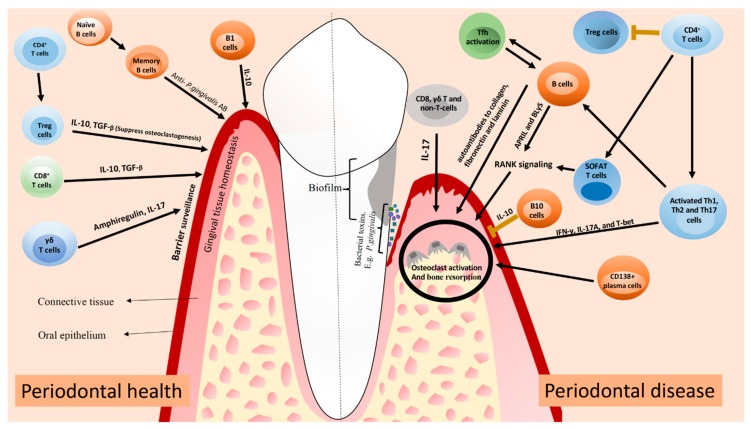Figure 1.
A summary of how mentioned T and B cells can contribute to periodontal health and disease. In periodontal health, Treg and CD8+ T cells contribute to periodontal homeostasis through the production of IL-10 and TGF-β. γδ T cells produce amphiregulin and IL-17 to promote periodontal homeostasis. B cells produce antibodies against periodontal pathogens, limiting the development of periodontal inflammation. In periodontal disease, activated Th1, Th2, and Th17 cells produce pro-inflammatory cytokines that contribute to tissue damage. Both T and B cells produce RANKL, which leads to osteoclast activation and alveolar bone resorption. Clonal activation of B cells by Tfh cells can lead to the production of autoantibodies to collagen, fibronectin and laminin, contributing to local tissue destruction. Lack of Treg cells or an impaired function probably impact on the development of periodontitis. IL-17 produced by other cells can also contribute to tissue damage via osteoclast activation. The figure was adapted from Lira-Junior & Figueredo [67].

